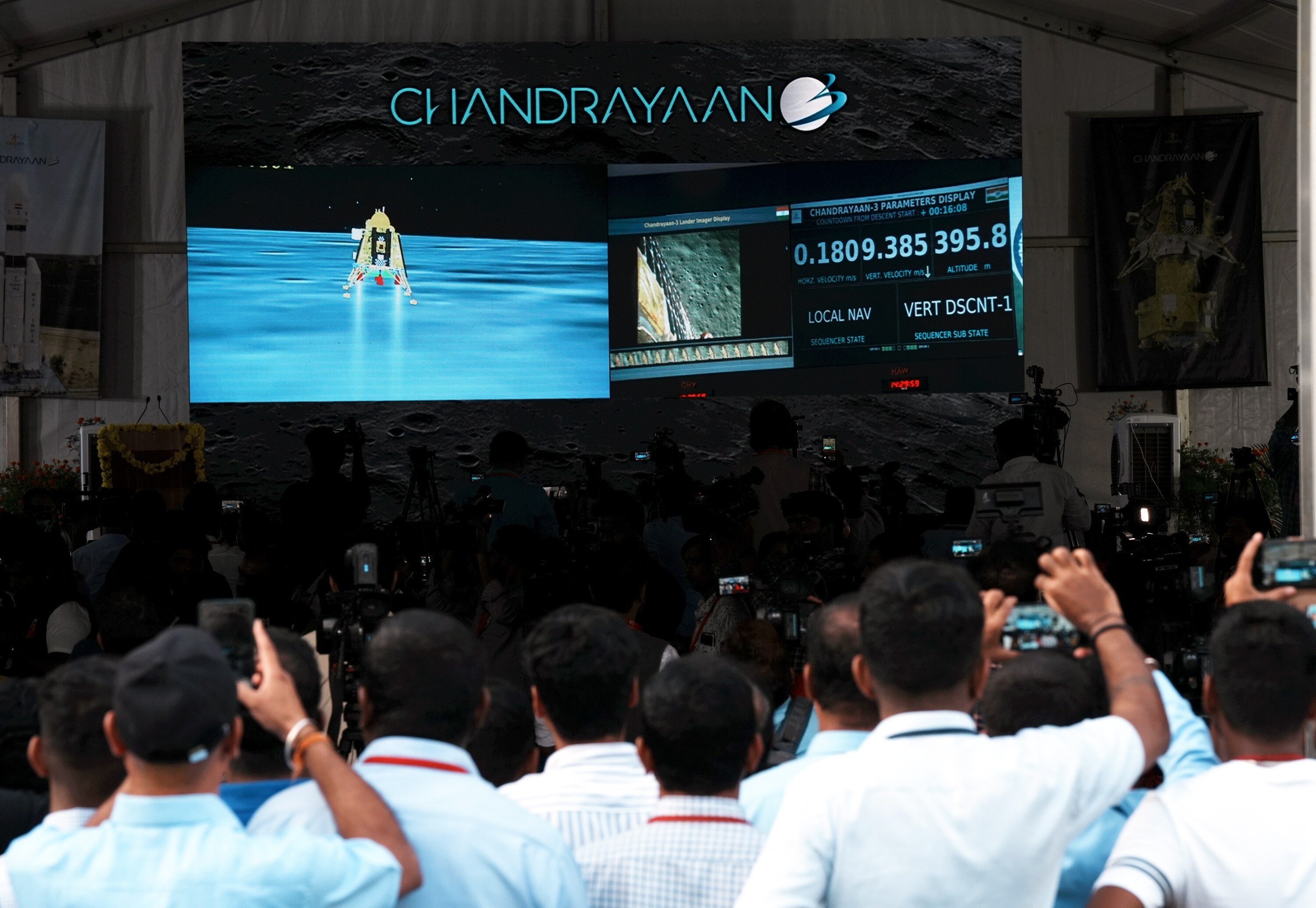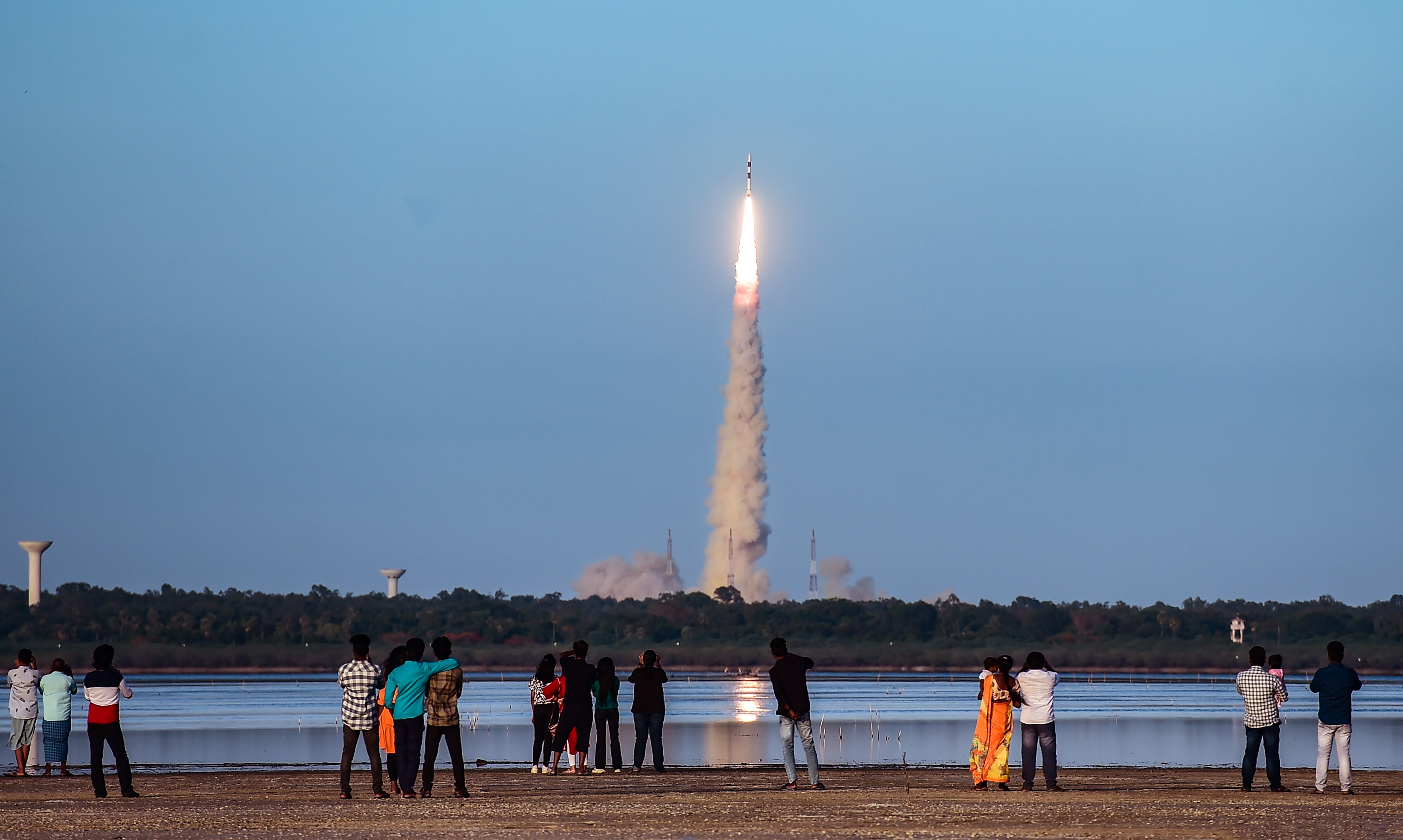Opinion | National Space Day: Sarabhai To Chandrayaan, India’s Space Quest Has Hit Top Gear. Next Chapter More Audacious

August has become an important month for India with respect to its efforts to strengthen its space ecosystem. In addition to marking Independence Day, the month includes the National Remote Sensing Day (August 12) in honour of Dr Vikram A. Sarabhai, the Indian scientist and innovator known as the “father of India’s space programme”. India now also celebrates National Space Day on August 23, a day meticulously chosen to commemorate the successful landing of the Chandrayaan-3 mission’s Vikram Lander and Pragyan Rover on the lunar surface last year, at a location aptly named Shiva Shakti Point, symbolising the nation’s determination and resilience.
This historic event not only made India the first country to land near the moon’s South Pole, but also cemented its position as a world leader in space exploration. Thus, the day honours the remarkable strides made by the Indian Space Research Organisation (ISRO) and inspires the next generation of space explorers and innovators.

India’s space journey has been nothing short of remarkable. It began in the 1960s, a time when the country was grappling with numerous socioeconomic challenges. Despite these hurdles, the founder of India’s space programme believed that technology had the potential to transform society. He envisioned a space programme that would advance scientific knowledge while also having a profound impact on the nation’s development.
On August 15, 1969, ISRO was officially established under his guidance. Since then, the organisation has consistently pushed the boundaries of what is possible, achieving milestones that were considered unattainable. From launching its first satellite, Aryabhata, in 1975 to reaching the Martian orbit on its first attempt, and the success of Chandrayaan-3 followed by Aditya L1, the country has carved out a prominent place for itself in the global space arena.
The National Space Day is an opportune moment to reflect on the strides made by ISRO in the Indian space sector, and to look at the ambitious goals set for the future.
Beyond Space
Space exploration has had a profound impact on various aspects of Indian society. In addition to innovative breakthroughs in space research, it has played a crucial role in addressing some of the most pressing challenges. It has been instrumental in environmental monitoring, agriculture and forest management, disaster-related communication, and national security. For instance, ISRO’s satellites have been pivotal in providing accurate weather forecasts, monitoring natural disasters, and supporting agricultural planning. These applications have had a direct impact on the lives of millions, particularly those in rural areas. It has created jobs, fostered economic growth, and improved governance and administration. The benefits of space exploration extend far beyond the scientific community, touching the lives of individuals across the country.
As we mark National Space Day, it is important to look to the future of India’s space ecosystem. The vision for this ecosystem must be to make it highly automated, adaptable, sustainable, and commercially viable. The goal is not just to expand India’s space infrastructure, but also to foster innovative applications and competitive services that will boost the nation’s technological and economic landscapes.
By 2035, ISRO aims to establish the ‘Bharatiya Antariksha Station’ in low Earth orbit, which will serve as a hub for scientific study, technology development, and international collaboration. This space station is envisioned to be a significant step forward in India’s space exploration capabilities, providing a foundation for long-term human presence in space. By 2040, India plans to send its first astronaut to the Moon and venture to Venus-Shukrayaan 1. These missions will be monumental achievements, not only for ISRO but the entire nation. It will place India among the select club of countries that have successfully conducted crewed lunar missions and ventured to extra-terrestrial landscapes, demonstrating the country’s technological prowess and commitment to exploring the final frontier.
In parallel, India’s Deep Sea Mission, which aims to send a vehicle called MATSYA to explore the deep-sea resources at depths ranging from 5,000 to 6,000 metres, is expected to be realized in a few years. Such missions demonstrate India’s desire to explore both the vastness of outer space and the mysteries of the deep sea.
Massive Strides
The Indian space sector is rapidly emerging as an important part of the country’s economy. India’s space assets are projected to grow significantly in the coming decades. These assets are currently valued at $8.4 billion, but, with the adoption of the Indian Space Policy 2023, they are predicted to rise to $44 billion by 2033, accounting for 2-3% of the global space economy. However, the potential does not stop there. According to a recent Arthur D. Little assessment, the Indian space economy might reach $100 billion by 2040, fuelled by a thriving private sector..
The role of the private sector in achieving these economic targets cannot be overstated. The space sector in India is witnessing a paradigm shift with the active participation of private sector and start-ups. The opening of the space sector (in 2020) and Space Policy (2023) have paved the way for increased collaboration between the government and private players.
In recent years, there has been a considerable surge in private investment in the space sector, with space start-ups attracting more than Rs 1,000 crore. This influx of capital has spurred innovation and entrepreneurship, leading to the rapid rise of space start-ups across the country. Since the initiation of reforms in the space sector, the number of start-ups in the field in India has skyrocketed. Within a short span of just four years, the number has grown from single digits to over 200, according to the Department for Promotion of Industry and Internal Trade (DPIIT) Start-Up India Portal. Many of these start-ups have turned into lucrative ventures, contributing significantly to the growth of the space economy.
These start-ups are working on a range of innovative projects, from building rockets and satellites to developing space-based applications. Such involvement is crucial for the growth of the space sector, as it introduces new ideas, technological advancements, and the ability to commercialise space activities.
ALSO READ | Disaster Management Education An Investment In Safety, India Will Set Global Benchmarks
Symbiotic Relationship
Non-Government Entities (NGEs) have also played a pivotal role in the sector’s development. Several NGEs have launched their own satellites and are building satellite constellations for applications in agriculture, disaster management, environmental monitoring, and more. For the first time, an NGE has erected a private launchpad and mission-control centre on the ISRO campus, demonstrating the growing engagement between the public and private sectors. To further stimulate growth in the space sector, the Indian government has implemented a number of policies to encourage Foreign Direct Investment (FDI). FDI in the space sector is currently allowed through the government route for satellite development and operation. The Department of Space, in consultation with the DPIIT, is in the process of reviewing the FDI policy guidelines to make them more conducive to foreign investment.
The government’s role in this ecosystem is to provide the necessary infrastructure and support, as well as to ensure that the private sector can function profitably. This symbiotic relationship between the public and private sectors is key to driving India’s space programme forward. These governmental initiatives are likely to lure more international businesses to India’s space market, bringing with them not only finance but also modern technology and skills. While India’s space programme has been largely self-reliant, international cooperation has played a role in its success. Collaborations with other space-faring nations provide valuable knowledge and technological assistance. However, India has always highlighted the importance of developing its own capabilities, a policy that has proven successful in the long run.
Looking ahead, cooperation will be critical, particularly in areas such as space traffic management and the peaceful use of outer space. At the same time, healthy competition with other nations will encourage innovation and push the boundaries of what is feasible.
ALSO READ | ISRO Launches SSLV, India's Youngest Rocket, To Space With EOS-08 — WATCH
Inspiring The Youth
One of the primary goals of National Space Day is to encourage young minds to pursue careers in science, technology, engineering, and mathematics (STEM). The achievements of ISRO serve as a source of inspiration, demonstrating that, with dedication, innovation, and resilience, anything is possible. The future of India’s space programme will be shaped by the young people who choose to enter this field.
As space exploration becomes increasingly complex and ambitious, there will be a growing demand for skilled professionals. By inspiring the next generation, the country is ensuring that its space programme will continue to thrive and achieve new heights. Recognising the importance of nurturing future talent in the space sector, the Indian government, through IN-SPACe (Indian National Space Promotion and Authorization Center), has undertaken several initiatives to reach out to the academic community and young start-ups. A national committee for the adoption of space technology education in India and identification of mentors for expert advice has been formed with the aim of integrating space technology education across academic institutions.

Additionally, a Seed Fund Scheme, Pricing Support Policy, Mentorship Support, and Design Lab for NGEs have been implemented to encourage and handhold private sector participants. In addition to government support, industry associations like the Indian Space Association (ISpA) are playing a crucial role in the growth of the space sector. These associations are fostering collaboration between various stakeholders, including research institutions, academia, start-ups, and industry players.
The synergy between these entities is essential for achieving the ‘Whole of Science, Whole of Nation’ approach, which aims to harness the collective capabilities of the nation for the benefit of all. This will foster awareness, encourage skill development, and promote research, ensuring that India continues to produce world-class scientists and engineers.
Frugal But Fruitful
India’s space missions have always been designed to be cost-effective, leveraging the country’s human resources and skills to accomplish outstanding outcomes despite minimal financial resources. This approach has helped India become a leader in frugal innovation, with its space missions serving as a model for other countries. Some of the most noteworthy examples of this are Chandrayaan and Mangalyaan-Mars Orbiter Mission (MOM). At the grassroots level, the technology is now virtually touching everyone’s life, with applications in sectors such as disaster management, agriculture, infrastructure development, telemedicine, and even robotic surgery. The use of space technology in the SVAMITVA scheme, PM Gati Shakti, and smart city projects is transforming governance and improving the quality of life for millions of Indians.
Space is now the gateway to our aspirations and the future we want to create. The dream of becoming a self-reliant and globally respected space power is no longer a pipe dream — it is becoming a reality right in front of our eyes, and the best is yet to come. So far, successful missions have been more than just technological achievements — they have demonstrated the spirit of exploration and the pursuit of knowledge.
The celebration of National Space Day is a reminder of how far India has come, and how much further it can go. It is a day to recognise the scientists, engineers, and visionaries who made these accomplishments possible. But it is also a day to look ahead, to imagine what is possible, and to inspire the next generation to shoot for the stars. As we continue to explore the final frontier, we do so with the understanding that our journey is just beginning. The possibilities are limitless, and the future is bright.
By 2047, the centenary of India’s Independence, the country aims to be a major player in the global space economy. The government’s vision includes scaling up the space sector from its current 2% of the global space economy to 9-10% in the next decade. This ambitious goal will necessitate enormous investments in space infrastructure, research, and human resource development. The road ahead is difficult, but with the continued dedication of its scientists, the support of its government, and the enthusiasm of its youth, India is poised to achieve its vision for the future of space exploration.
Rocket Boys, a biographical series on the lives of Dr Homi J. Bhabha and Dr Vikram A. Sarabhai, captures the journey of these pioneering scientists as they drove India’s scientific progress, navigating a transformative era that shaped the nation’s Independence and strength in science. This tale must be spoken and watched as it complements the theme for this year’s National Space Day, ‘Touching Lives While Touching the Moon’, which captures the essence of this journey. It serves as a reminder that space exploration is about more than just scientific triumphs; it has a social influence. Let us be inspired by India’s space voyage and commit ourselves to the pursuit of knowledge, the spirit of exploration, and the advancement of humanity through space science and technology. The sky is no longer the limit — it is the gateway to our aspirations and the future we seek to build.
P.K. Joshi is a professor with the School of Environmental Sciences, Jawaharlal Nehru University, New Delhi.
[Disclaimer: The opinions, beliefs, and views expressed by the various authors and forum participants on this website are personal and do not reflect the opinions, beliefs, and views of ABP News Network Pvt Ltd.]


























